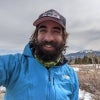Heading out the door? Read this article on the new Outside+ app available now on iOS devices for members! Download the app.
If you want to put some social distance between yourself and other people, Canyonlands National Park is usually a great place to do it. With an area the size of Los Angeles and less than one-fifth the visitors of Zion, you could hike its twisting canyons for days without seeing another soul. And on Wednesday, it got easier to do just that when the Department of the Interior announced it would waive all national park entrance fees in response to the ongoing coronavirus pandemic.
“This small step makes it a little easier for the American public to enjoy the outdoors in our incredible National Parks,” Secretary of the Interior David Bernhardt said in a statement. “Our vast public lands that are overseen by the department offer special outdoor experiences to recreate, embrace nature and implement some social distancing.”
But local officials have a very different message for would-be visitors: Stay away.
On Tuesday, the Southeast Utah Health Department effectively closed the county to overnight visitors, issuing a public health order that restricted overnight and short-term lodging to local residents and “essential” visitors. It also banned non-residents from camping in Grand, Emery, and Carbon Counties. (The order doesn’t apply to state and national parks, which aren’t under the department’s jurisdiction.)
“The closure was put in place by the health department to try to keep the people in this community here and keep people from outside the community out at this time,” said Brittany Garff, public information officer for the department.
As of Thursday morning, Utah has 63 confirmed cases of COVID-19, and while none have been reported in the three-county area served by the Southeast Utah Health Department, officials there worry that an outbreak could overwhelm the region’s sparse medical facilities. If visitors begin to crowd nearby national parks like Canyonlands and Arches, Garff said, that could compound the problem.
“You have that potential of people getting injured and needing those hospital resources as well,” she said. “So then our hospital would be so inundated that there’s a potential of not having the space for all of these people.”
Local doctors share the department’s concerns. In a letter on Monday, officials from the 17-bed Moab Regional Hospital urged Utah Governor Gary Herbert to shut down all non-essential businesses in the city. If possible, they added, he should take steps to shut down Arches National Park as well to avoid a surge of tourists over spring break weekend.
“This will bring approximately 5,500-6,000 people from all over the country, including areas where there is community spread of COVID-19,” the letter says. “Although the desert around Moab is vast, the town itself is small — cruise ship small — with similar isolation and limitations.”
A few national parks, including Rocky Mountain and Yosemite, have closed to visitors following requests from local health officials. Many more, however, remain fully or partially open, and gateway towns are bracing for the arrival of the virus. On Wednesday, Jackson, Wyoming, a common access point for Grand Teton and Yellowstone National Parks, reported its first COVID-19 case. The patient, a local resident over the age of 60, self-isolated after developing flu-like symptoms.
“Though this is our first case, we do not expect it will be our last,” Dr. Travis Riddell, the Teton District Health Officer, said in a press release.
A jump in visitors could also affect National Park Service workers, most of whom are still out in the field. Douglas Morris, a former superintendent of Shenandoah National Park who now serves on the executive council of the Coalition to Protect America’s National Parks, said that he’s heard from rangers who fear being exposed to the virus.
“I think there is concern that they are being unnecessarily required to deal with the public in ways that go beyond what the CDC recommends and what most local and state officials recommend,” Morris said. “Keeping the parks open requires that they continue business as usual at a time when it’s not business as usual.”
In Morris’s view, the right decision is clear, if not easy: It’s time to close the national parks.
“We have to hunker down and keep away from each other,” he said. “Inviting people to visit parks doesn’t separate people from each other, and more than anything, it doesn’t separate people from park staff.”
